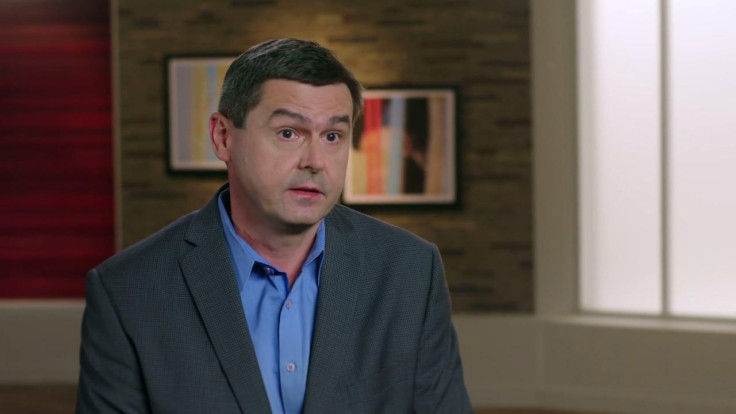Meet Oliver Schabenberger: The chief technology officer of SAS using analytics to fight fraud
In an interview with IBTimes UK, Schabenberger also explains why he thinks AI won't replace humans.

Credit card fraud and plane crashes are almost never mentioned in the same breath. The overwhelming majority of observers would struggle to think of a connection between a fraudulent card transaction and a potentially catastrophic mechanical failure on an aircraft.
However, analytics giant SAS believes both can be prevented through predictive analytics. Unlike descriptive analytics, which uses an inward-looking method based on historical data to answer the question of what has happened, predictive analytics uses the same data to predict what and when something might happen.
"Fundamentally, card fraud and a mechanical issue on a car or airplane are very rare events," Oliver Schabenberger, the company's executive vice-president and chief technology officer, tells IBTimes UK at the SAS Global Forum in Orlando, Florida.
"To understand when something is going to fail, you have to study rare events and understand the link between the failure and the variable that has triggered it."
Gathering enough evidence to be able to individuate what those variables are is the main challenge for the US firm, explains Schabenberger.
"The large majority of credit card transactions are processed without any issues, just like the overwhelming majority of flights do not encounter any issues at all," he adds.
A decade ago, HSBC first deployed SAS Fraud Management as the foundation for its real-time fraud detection and ongoing fraud management across its global network after posting $4.84bn (£3.87bn) in credit card fraud losses a year earlier.
The software, which was initially rolled out across the bank's operation in the US, Europe and Asia, protects 100% of credit card transactions in real time. In the UK, where SAS covers both credit and debit cards transactions, prevented fraud totalled £1.76bn in 2015, meaning £7 in every £10 of attempted fraud was stopped.
However, according to a report released last year by the Financial Fraud Action, the financial fraud losses across payment cards, remote banking and cheques totalled £755m in 2015, a 26% year-on-year increase.
To ensure credit card transactions are even safer, SAS has worked closely with banks to gather a better understanding of how to tackle the threat of fraud.
"Some of our staff who work alongside banks come from a banking background themselves," explains Schabenberger.
"We need to understand the field in which our clients work to ensure our software is effective for them."
Consider SAS is the largest global market shareholder of advanced analytics and caters to all segments of the market - Lockheed Martin, WWF, Lufthansa, Allianz and Australia's Commonwealth Bank are only some of the firm's clients - that is no mean feat.
However, there is another, and arguably bigger, challenge facing the North Carolina-based firm: to remain ahead of the curve in an environment that is never standing still.
In the 40 years since SAS entered the scene, the world of analytics has changed immeasurably, as technology and methodology have both matured. The key, Schabenberger says, is to react to change in the marketplace by remaining modern without compromising the customers' needs.
"Changes in the industry have forced us and will force us to adapt," he explains.
"There are many more analytic providers in the field now than in the past and that is why we can not afford stand still.
"I see us as the analytics provider whenever data is involved. The future of analytics is more automated, but it will be automated in a clever way."
However, the SAS CTO is quick to quell fears robots and algorithms will soon replace humans in a number of jobs.
"I've accepted that algorithms and software have intelligence," he says.
"I've accepted that they make decisions for us, but we still have choices."
Today's algorithms are reliable, repeatable and work around the clock without fatigue, but for all of that they do not behave like humans. And while the "AI" label is becoming trendy, true systems deserving of the AI title have two distinct things in common: they belong to the class of weak AI systems and they tend to be based on deep learning.
To put it in context, so-called weak AI is trained to one task only. For example, the software that regulates a house's heating system can not operate a driverless vehicle.
"SAS is very much engaged in weak AI, building cognitive systems into our software," Schabenberger adds.
"We are embedding learning and gamification into solutions and you can apply deep learning to text, images and time series."
Sophisticated and refined though they might be, algorithms are simply being used to support systems that can improve our capabilities and make a business running more smoothly or our life comfortable.
And yet, many remain uneasy at the thought of machines making decisions on their behalf.
"We make decisions based on reason, we use gut feeling and make split-second judgment calls based on incomplete information," Schabenberger explains.
"We want to get tricked by the machine in a clever way. The rest is just hype."
© Copyright IBTimes 2025. All rights reserved.






















